Fittonia (photo in the article) is a houseplant that will appeal to lovers of fine, discreet, modest, sophisticated beauty. An undoubted advantage will be a fairly simple home care. Although the culture blooms extremely rarely, and breeding hybrids in principle do not throw buds, they are not the main advantage of exot. The attention of plant growers is attracted by decorative leaves of various shades, decorated with intricate ornaments of spots and lines.
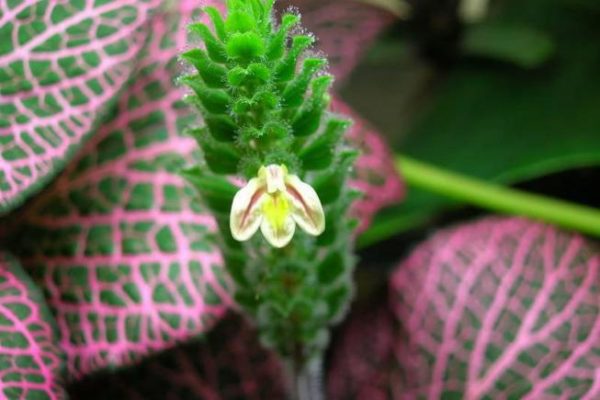
Content
Types and varieties of Fittonia
The representative of the Acanthus family, whose homeland is the tropics of South America, has only a few species:
- Fittonia Vershaffelt. The leaves are elongated, oval, pubescent with soft villi. Crimson, pink and red-violet veins form an intricate pattern. Shoots can change color from silver to olive. The plant reaches 10 cm in height.
- Fittonia Silver-veined. On large oval, slightly bent back, emerald plates, a shining silver-white ornament clearly stands out.
- Giant. The only member of the family with an erect stem growing up to 60 cm in height. The length of the glossy leaves is 15 cm, the width is 10 cm. A fantastic pattern made up of rich scarlet stains, spots and lines is clearly indicated. Shoots red with purple tint. Almost not grown indoors, as even experienced florists find it difficult to create a suitable microclimate for the flower.
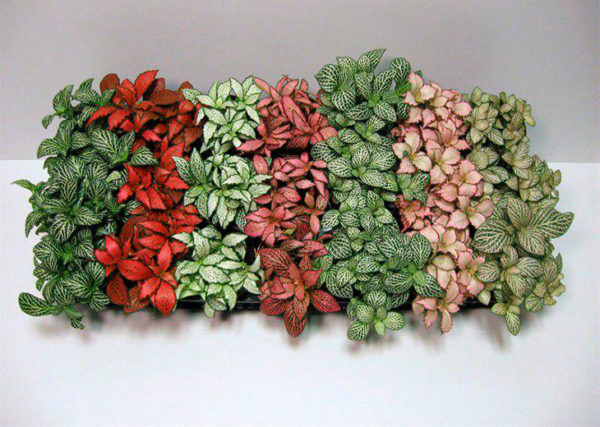
Breeders have bred a sufficient number of varieties that can be grown at home (photo below):
- Skeleton. It differs in small oval, dull olive-colored plates. They reach a length of 3 cm. The entire surface is dotted with a rich scarlet mesh, which creates the illusion of a glow.
- Frankie Elongated plates of coral or pale pink are framed around the perimeter with a border of dark green color.
- Josan. Scarlet leaves with saturated emerald fringing and "strokes" over the entire surface.
- Pearcei. Velvet plates with a mesh of pink and raspberry veins.
- Mosaic Kings Cross. Corrugated leaves with a pointed tip are almost completely painted white, which creates a feeling of sea foam. Only a thin emerald edging and a “spray” placer on the surface of the plate remind of plant affiliation.
- White Vein. It features a “fresh” shade of green foliage and snow-white veins.
- Fortissimo The plates are oval, almost round with a bright network of dark pink stripes.
- Red The red ornament captures the entire surface of the sheet, dominating the color over the bright green color of the plates.
- White Anne. The network of pearl-silver veins is framed by an emerald border.
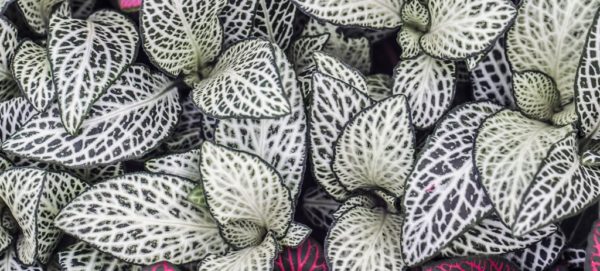
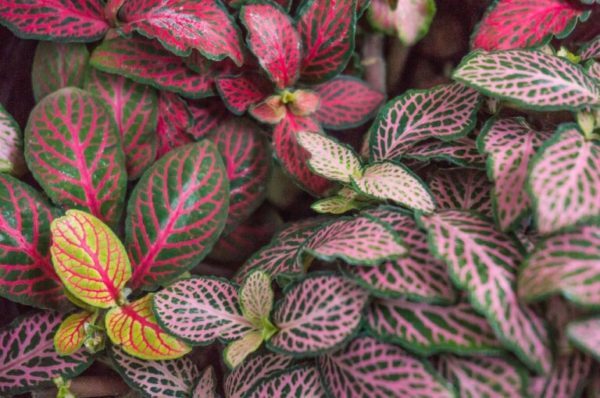
In fact, this is not a specially bred, exclusive variety of plants, but several bright, contrasting varieties of perennials planted in one container. Therefore, the principles of content are identical to "monoflowers".
Fittonia - home care
Botanists tried to adapt the tropical exotica to indoor living.But this is not a flower that you can forget about for a long time. The basic rules of care and creating the necessary microclimate should be considered:
- The optimal placement is near windows oriented west and east. Fittonia prefers intense, but diffused light. Putting a flower on the south side, it is necessary to provide shading and protection from direct exposure to ultraviolet radiation. In winter, artificial illumination is required (2-4 hours a day).
- Comfort temperature 20 ° C-25 ° C. When lowered to 17 ° C, it often drops leaves. At high heat rates, additional spraying is required. It is extremely important to protect from drafts and daily fluctuations in temperature indicators. It is undesirable to take to the loggia or terrace, even in summer.
- Water for irrigation is taken soft, settled, thawed. The optimum temperature is 3 ° C-5 ° C above room temperature. Do not allow the complete drying of the soil in the pot or waterlogging. A plant may drop leaves or die. It is important to monitor the condition of the substrate, as soon as the top layer dries, it is necessary to moisten it. The frequency of watering is regulated with the reservation for the season and room temperature. In winter, it is held a little less often. Half an hour after the procedure, the excess liquid from the pan is drained.
- For a comfortable existence, the tropicana needs high humidity and systematic spraying twice a day. In close proximity to the exot, it is recommended to put a container of water, a humidifier, an aquarium or a fountain.
- As fertilizers, any liquid mineral products for indoor plants are suitable. However, their concentration should be halved. The frequency of soil enrichment with useful components is every 2 weeks in the warm season, in winter the procedure can be omitted or fertilized at most once every 30 days.
- Important point of quality home care for the Fittonia mix plant (photo in the article) or any other variety planted separately, is regular pruning and pinching, designed to maintain the decorativeness of the flower. The procedure is carried out at the end of March, with a frequency of 3-4 years. For better branching, the tops of young shoots are removed, only a few leaves need to be left on the old ones. To minimize stress, pruning is carried out in 2-3 stages. It is impossible to completely expose a culture, otherwise it will perish.
- Fittonia blooms in summer. The buds are small, nondescript and of no value. Many florists recommend removing flower stalks that appear directly from the leaves so as not to drain the bush.
The ideal way is growing pet in florariums or glass vessels. Thanks to them, a microclimate is created that meets all the requirements of exotics.
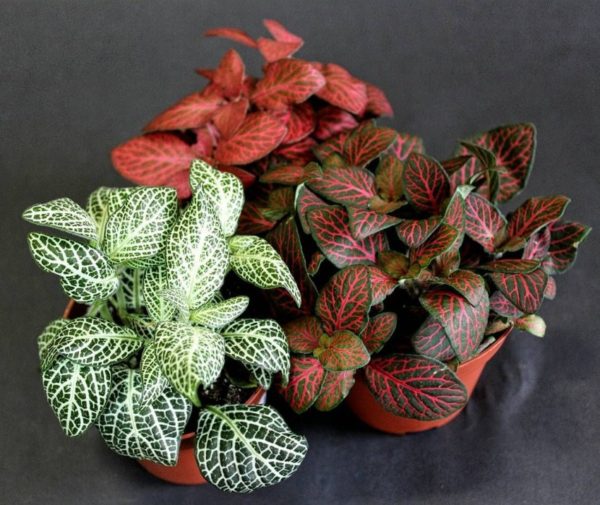
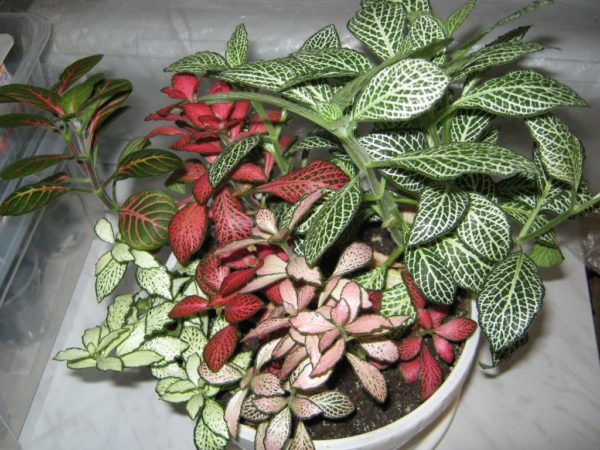
Fitton transplant at home
After acquiring a small ornamental plant, he needs to be given several days for acclimatization, placed in quarantine. Further, the fittonia transplant is mandatory.
A flowerpot for a ground cover tropicana choose low and wide. A bonsai bowl is suitable.
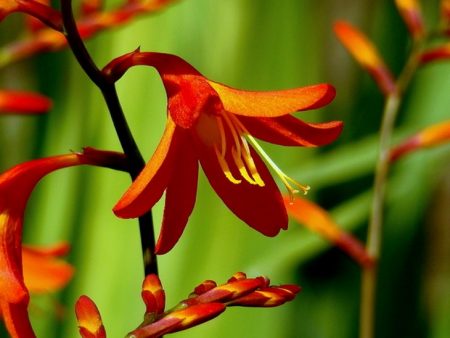 You may be interested in:
You may be interested in: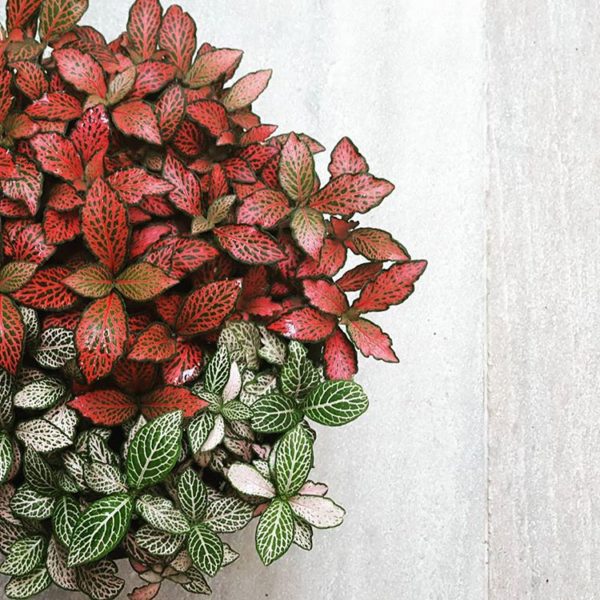
The soil mixture can be bought at a flower shop or made independently:
- Ready-made substrate for violets or geraniums.
- Coniferous and sod land, sand, peat, which are taken in a ratio of 2: 2: 1: 1.
- An equal amount of humus, sand, peat or 1 part of these components and 3 parts of leafy soil.
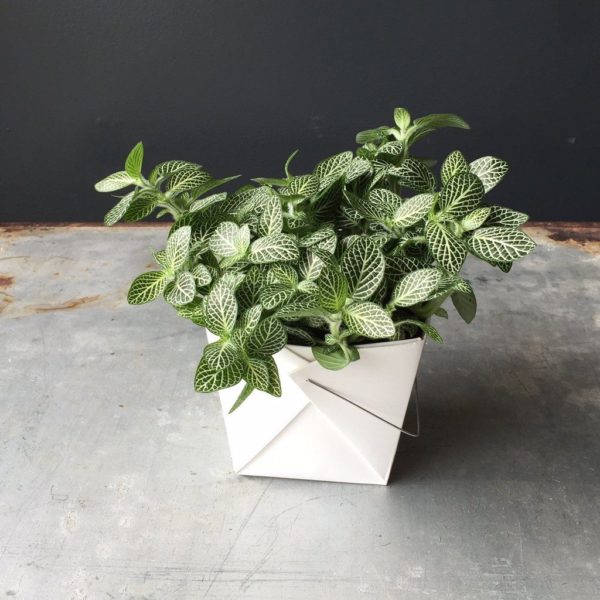
The transplant procedure involves the use of a transshipment method. It is carried out in several stages:
- Pour the prepared pot with boiling water for disinfection.
- Cover the bottom with a drainage layer (approximately ¼ of the height), previously calcined in the oven. Pebble, broken brick, expanded clay will do.
- Pour the substrate spilled with boiling water for disinfection.
- Carefully remove the culture from the purchased container. Lightly shake off old soil without exposing the roots. Otherwise, the plant will be difficult and slowly take root.
- Put in a new container. On the sides to fill up the earth.
- Moisturize the soil.
- Drain excess fluid from the sump.
- Put in a warm, bright place, protected from direct sunlight.
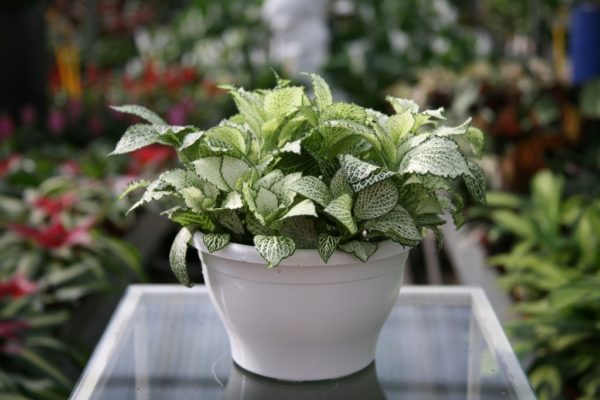
Breeding
The easiest way to breed Fittonia is to divide the bush. It is often combined with a planned transplant. With a sharp, disinfected tool, the mother plant is cut into several parts and planted in separate pots. The division must be carried out as carefully as possible so as not to damage sensitive roots. Place the cuts should be sprinkled with charcoal or activated carbon.
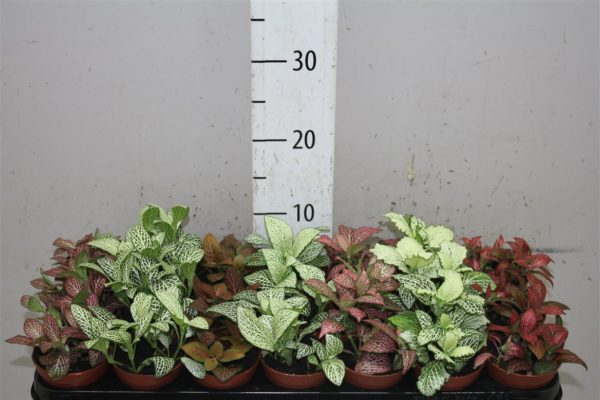
Another pretty easy way breeding - cuttings. It is carried out in several stages:
- At the top, choose a healthy shoot, 6-7 cm long, with 3-5 leaves.
- Cut with a well-ground knife. The separation points on the mother bush are powdered with charcoal or activated carbon.
- The resulting stalk is planted in a mixture of wet sand, peat and moss.
- Cover with plastic wrap or glass to create greenhouse conditions. Maintain a constant temperature of 26 ° C.
- Remove cap and spray regularly.
- After the appearance of the roots (it can take from 1 to 3 months), transplant into a suitable pot.
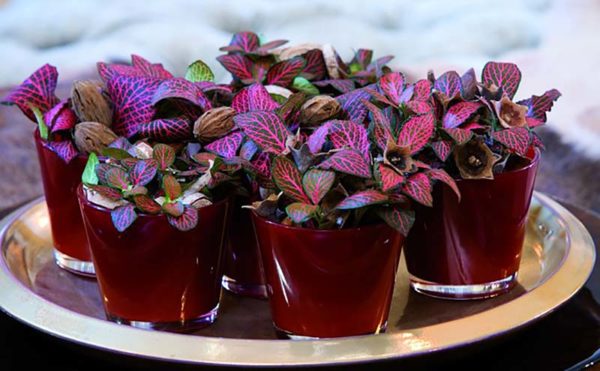
A more gentle method of propagation using layering:
- Choose a young, strong escape.
- Remove the top 2-3 pairs of leaves.
- Bend to the ground and drip, not cutting from the mother bush.
- After rooting, separate and transplant, as an independent plant.
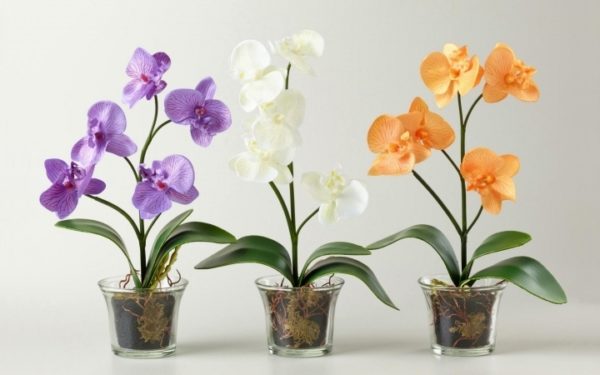 You may be interested in:
You may be interested in: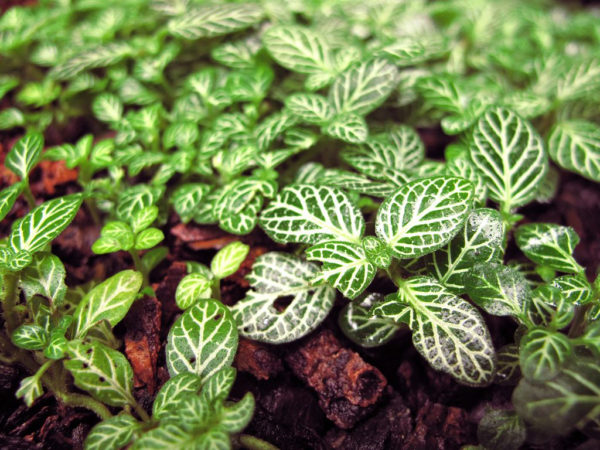
Diseases and pests of Fittonia
When caring for a flower, you can encounter many problems. Their main reason is improper conditions of detention:
- Root rot. It provokes a halt to growth and development, the roots darken and soften, exude an unpleasant aroma. Leaves change color, lie down and fade. Difficult to treat. At the initial stage of development, it is necessary to remove the affected parts, treat with fungicides, transplant.
- Thinning plates, a decrease in the severity and clarity of the pattern on the leaves. The reason is a lack of light or nutrients.
- Spotting. May appear due to direct sunlight, excessive soil moisture.
- If the flower losing leavesthat means he lacks light, moisture, or is simply cold.
Low temperatures can cause stems to rot. - Yellow, rolled up leavesappear due to overdried air and insufficient watering.
- Plate size reduction, an increase in the distance between them, indicates a lack of light.
Caring for fittonia at home requires regular inspection. Exot is not attacked by specific pests. Omnivorous parasites can attack him:
- Shield. It feeds on plant juice. As a result, young shoots dry out, the formation of new shoots ceases, leaves and stems turn yellow, later fall off. If you miss the moment of deterioration of the tropical flower, the process will end in his death. After the detection of gray-brown plaques and sticky liquid on the inner side of the plates, it is necessary to thoroughly treat the plant with soapy water and wrap it with plastic wrap for half an hour. Wash off with warm water. For the complete destruction of parasites, insecticides are used three times with a frequency of 7-10 days.
- Thrips. Leaves lose their color; there are punctures on them. Brown or brown spots appear on the inside of the plates. Damaged areas become silvery, leaves die off. The diseased flower should be isolated from other indoor plants, then rinse thoroughly under a stream of warm water and transplanted into disinfected soil and a pot. Treat all available plants with insecticides, including fittonia 2-3 times with a frequency of 10 days. For safety, place sticky traps on the perimeter of each “window sill inhabitant”.
- Spider mite. A lot of bright spots and thin whitish “strings” appear. The plates discolor, fold into a tube. The plant dries very quickly. Against pests, insecticides belonging to the class of acaricides are used. Among the gentle means, garlic or onion infusion, alcohol, soap solution are effective.
- Mealybug. The presence of a pest can be determined by small whitish lumps and sticky coating. A mild defeat is fairly easy to handle. It is enough to clean the plant with soapy water, spray it with tobacco solution three times, with a frequency of 10 days. In advanced stages, insecticide treatment is used.
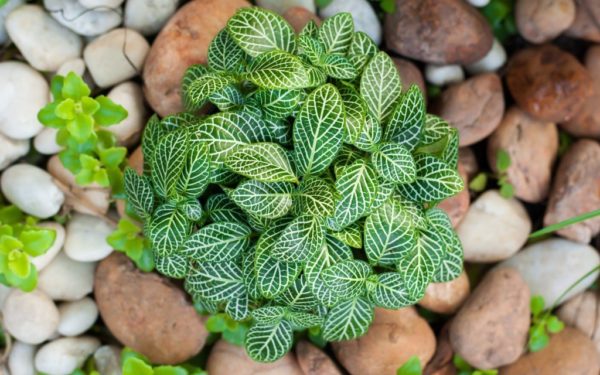
For those who first encountered an exotic beauty, the process of leaving may seem somewhat time-consuming. In fact, she, like other pets, just needs to create a comfortable microclimate and follow basic maintenance rules. Instead, Fittonia will become an interior decoration for a real esthete, pleasing the eye with an incredibly varied, colorful




 Sow in the ground, without seedlings: 10 beautiful and unpretentious flowers
Sow in the ground, without seedlings: 10 beautiful and unpretentious flowers Platicodon planting and outdoor care
Platicodon planting and outdoor care Hosta - planting and care in the open ground in the Urals
Hosta - planting and care in the open ground in the Urals Oleander - care and growing at home
Oleander - care and growing at home